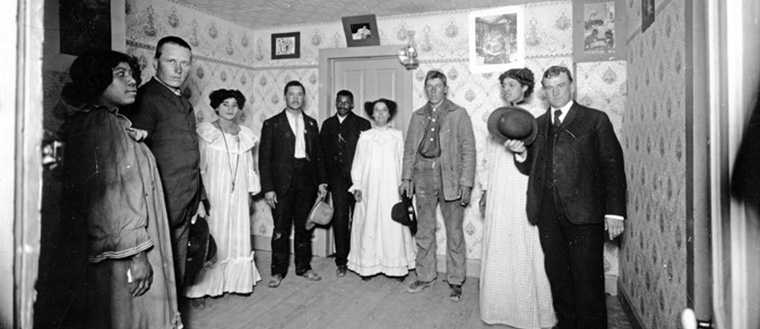Red-Light Districts in Montana 1890-1920

Dates: March 8, 2021
Meets: Mon. from 3:00 PM to 4:30 PM
Location: Online Presentation
Cost: $0.00
We will send you a reminder email with login instructions one business day before the program start date. If there are additional sessions, we will send reminders the morning of those sessions.
Meets: Mon. from 3:00 PM to 4:30 PM
Location: Online Presentation
Sorry, the signup deadline has passed.
| Date | Day | Time |
|---|---|---|
| 03/08/2021 | Monday | 3 PM to 4:30 PM |
Please note: This course program requires membership in a 2020 - 2021 OLLI at MSU Membership or 2021 - 2022 OLLI at MSU Membership or 2021 - 2022 OLLI at MSU Membership
Crystal Alegria, director of The Extreme History Project, will discuss the social complexity of Montana's red-light districts and the women who navigated them and prospered. From 1890 to 1920, many Montana towns had thriving red-light districts. These illegal but tolerated districts were complex landscapes of prostitution, business and community. As this era ended and reform movements peaked, the red-light districts and the woman who operated them were moved out and closed-up.
Participants will learn about our nation's progressive era (1890 to 1920) reform movements and the social and economic drivers that caused prostitution to thrive in the early portion of the progressive era and then fail at the end. Alegria will discuss the factors that led women to prostitution, the hierarchical system of the red-light districts and the common juxtaposition of the Chinese community to red-light districts. Participants will come away from the presentation with a deeper understanding of Montana's landscapes of vice and why these restricted districts no longer exist along our downtown streets.
**Registration for this event closes one hour prior to the event start time Unless otherwise noted.
Participants will learn about our nation's progressive era (1890 to 1920) reform movements and the social and economic drivers that caused prostitution to thrive in the early portion of the progressive era and then fail at the end. Alegria will discuss the factors that led women to prostitution, the hierarchical system of the red-light districts and the common juxtaposition of the Chinese community to red-light districts. Participants will come away from the presentation with a deeper understanding of Montana's landscapes of vice and why these restricted districts no longer exist along our downtown streets.
**Registration for this event closes one hour prior to the event start time Unless otherwise noted.
| Fee: | $0.00 |
Online Presentation
This is a real-time (live) online class that meets at the specified day(s)/time(s) listed.We will send you a reminder email with login instructions one business day before the program start date. If there are additional sessions, we will send reminders the morning of those sessions.
Crystal Alegria
Crystal Alegria is the executive director of The Extreme History Project, a nonprofit located in Bozeman. She has worked in public history at various museums and heritage organizations for the past twenty years. She works to bring history to the public and highlight the stories of marginalized people.| Date | Day | Time | Location |
|---|---|---|---|
| 03/08/2021 | Monday | 3 PM to 4:30 PM | Online Presentation |
For information about refunds, cancellations, minimum enrollments and more, see the Course Administration and Procedures page.
You may also be interested in these related courses:
Academic Technology and Outreach
Montana State University
P.O. Box 173860
Bozeman, MT 59717-3860
Tel: (406) 994-6550
Fax: (406) 994-7856
E-mail: ato@montana.edu
Location: 128 Barnard Hall
Director:
Kim Obbink
